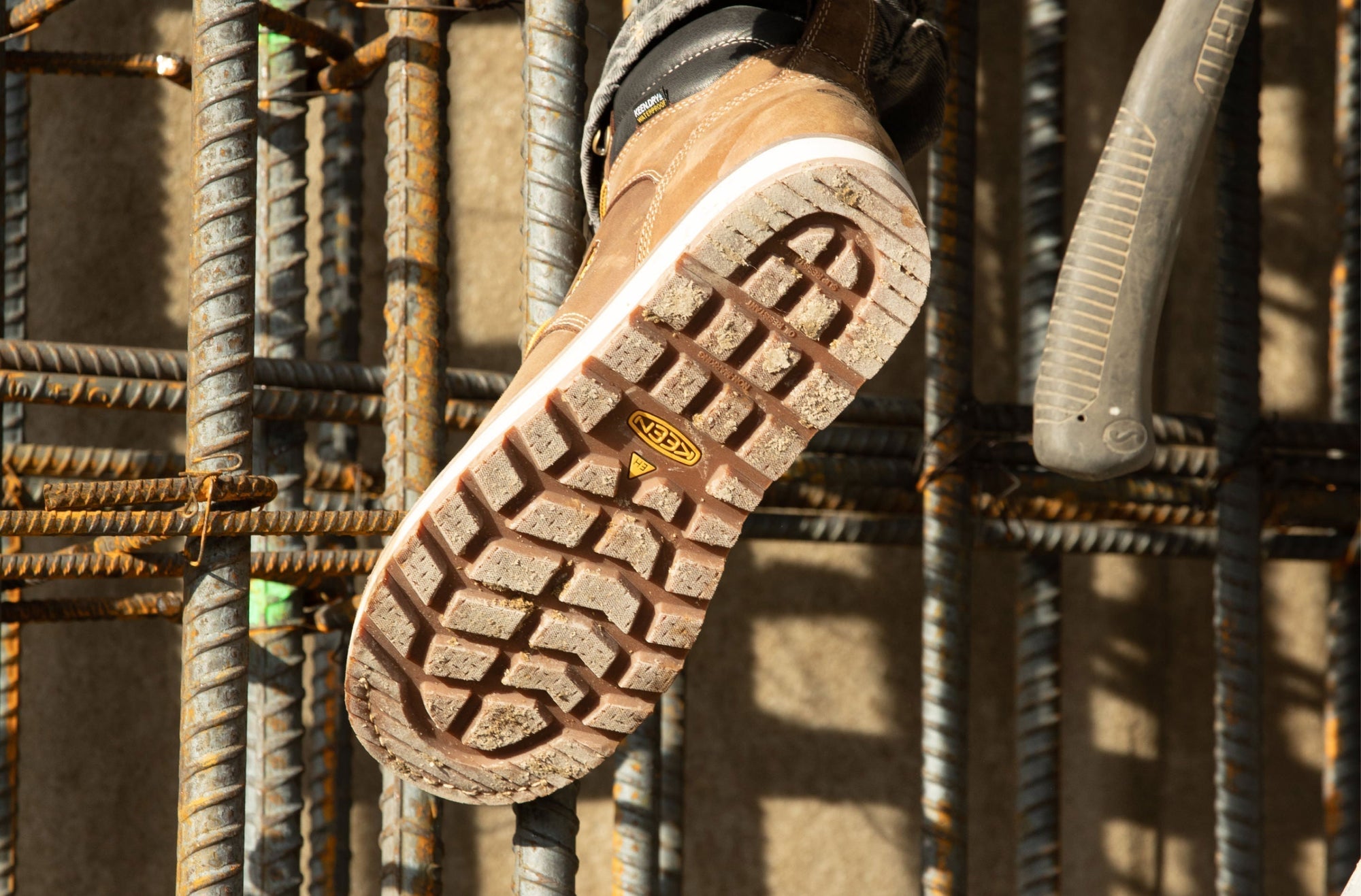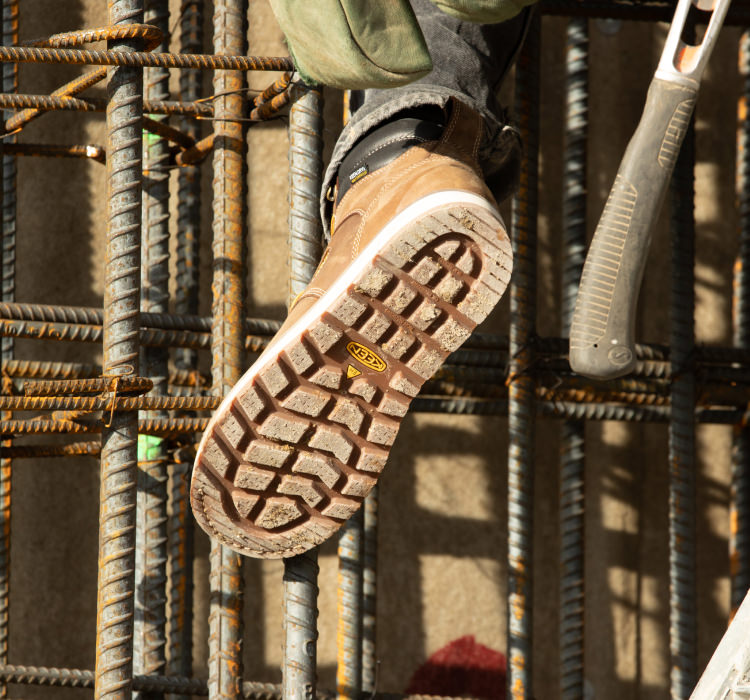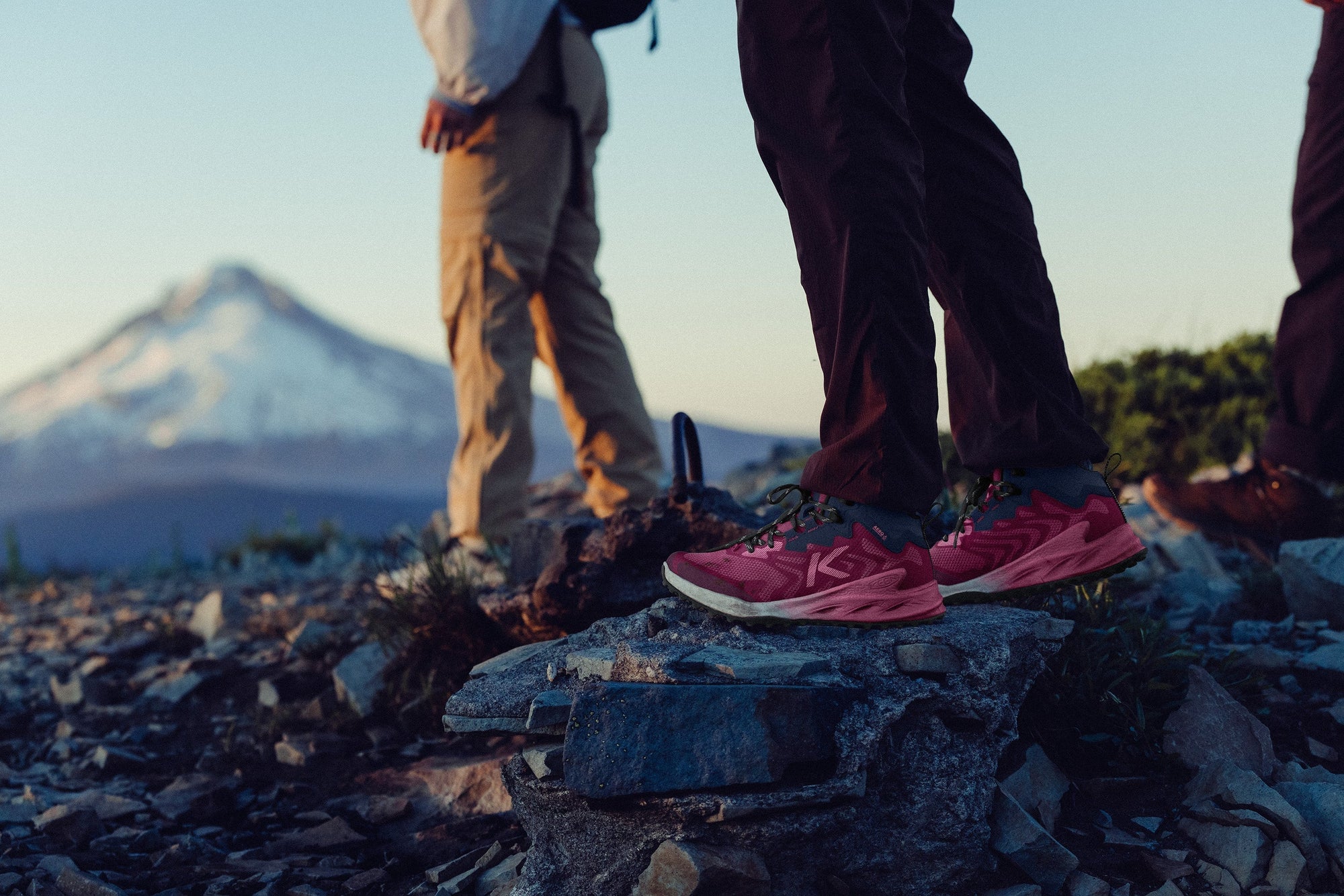KEEN Utility work boots and shoes can trace their DNA back to the launch of the original KEEN Targhee hiking boot in 2005. The most important lesson we learned from all those trail miles? Weight savings are everything. Since 2009 when our work boots and shoes were launched, we’ve been on a constant journey to make them lighter.
KEEN Utility designers and developers shave weight from our boots and shoes in many different ways. They’re always on the lookout for new materials, manufacturing techniques, and design advancements that minimize bulk. In this article, we’ll explore how KEEN Utility makes lightweight work boots.
Why Lightweight Work Boots Are Important
The kinds of jobs that require safety-toe work footwear usually require high levels of exertion and movement. Warehouse workers, framers, and mechanics spend lots of time on their feet, and can walk thousands of steps during a typical shift. Having to carry less weight during your workday can make a huge difference.
As an example, let’s consider two different work boots. Boot A weighs 25 ounces; boot B weighs 30. Let’s say that their owner, a warehouse worker, walks 9,000 steps per 8-hour shift. In a 25-ounce boot, the worker moves 225,000 ounces, or 14,062 pounds, during their 9,000-step workday. In a 30-ounce boot, the worker moves 270,000 ounces, or 23,125 pounds. So, by choosing the lighter boot, the warehouse worker can avoid having to move over 9,000 pounds over the course of a day.
It’s All About What It’s Made Of
The designers here at KEEN Utility are on a nonstop hunt for newer, lighter materials. Since they work in the same space as the designers of our lightest, fastest hiker styles, they get to use some of the same ideas and technologies. Here are a few examples of things that contribute to our lightweight work boots:
• Our carbon toes weigh 15% less than steel and offer the same protection.
• We design our work sneakers with some of the same knit materials and engineered meshes used in high-end running shoes.
• Each generation of midsole foam we develop is lighter than the previous. For example, our new KEEN.ReGEN+ cushioning is lighter weight than KEEN.ReGEN, but delivers 20% more energy return with every step.
• The KEEN.TOUGHSOLE outsole we use in some of our heavier-duty work boots is lighter weight and more durable than rubber.
• KEEN.RATCHETFIT, our mechanical lacing system used on the Snapline, can be lighter than standard lacing because it eliminates the need to use metal lace eyelets and hooks.
Modern Manufacturing, Lighter Work Boots
We love welted work boots. We’ve even got a few in our lineup, including the ever-popular Cincinnati and the tough-as-nails Camden. It’s a super-durable construction method, and it has its place in work footwear, but it’s also fairly heavy. That, plus the fact that welting has been around since 1869, made us think that there must be a better way.
 That’s what inspired us to create KEEN.FUSION. This process uses heat and pressure to fuse the upper to the outsole without glues or solvents. Boots built using KEEN.FUSION are more flexible than welted work boots and more durable than cemented ones. Plus, it’s one of the lightest ways to build boots that last.
That’s what inspired us to create KEEN.FUSION. This process uses heat and pressure to fuse the upper to the outsole without glues or solvents. Boots built using KEEN.FUSION are more flexible than welted work boots and more durable than cemented ones. Plus, it’s one of the lightest ways to build boots that last.

Our upper-to-sole connection technology is just one area we’ve innovated to save weight. But, what about the upper itself? We’ve introduced 3D-printed reinforcements and structural pieces here on a few of our styles. Because the reinforcing material is deposited exactly where it needs to go, and in just the right amount, it helps to reduce weight while still maintaining the durability you need.
Bootmaking Scientists
All of these material and manufacturing advancements would mean nothing if it weren’t for skilled product designers and developers who combine them all into a complete product. Luckily for KEEN Utility, we’ve got the best in the industry. Our team has over 110 years of collective experience in the footwear industry, and they really understand the science of building work boots that go the distance without weighing you down. They analyze every single piece of material, every stitch line, every cut, every piece of hardware, and every safety feature to ensure that everything offers maximum performance with minimum weight.
One of the primary ways our design and development teams trim weight from our products is by thoroughly analyzing how workers use them. They spend lots of time in the field, making observations, asking questions, and taking notes. This results in some pretty unique decisions. An example is our new Speedworks, which is the lightest work sneaker we’ve ever made. Our team noted that testers used this sneaker on flat, hard surfaces a majority of the time, so it didn’t need an extra-thick rubber outsole with deep treads. We reduced the thickness of the outsole and increased the negative space between the lugs, making it lightweight and grippy, but still durable.

Another thing our team learns during field research is which parts of a work boot wear out fastest. They use this information to strategically map out where a boot needs reinforcement and where it can use a minimal amount of material to save weight. We’ll use the Snapline as an example again. Our development team chose to use durable leather for the toe and forefoot, as these areas are prone to high wear. Further back on the boot, in areas exposed to less abrasion, the leather transitions into lightweight mesh.

TL;DR
Work boots do way more than just protect your feet at work. They have a huge effect on your comfort and productivity, too. KEEN Utility continues to push the boundaries of work boot design by prioritizing weight reduction through the use of advanced materials, modern construction methods, and worker-driven design. Whether you're on your feet all day in a warehouse or navigating jungle-gym-like job sites, KEEN Utility lightweight work boots can reduce fatigue, improve mobility, and help you power through your shift. Lighter boots mean a lighter load, and a lighter load can help work feel less work-y.












